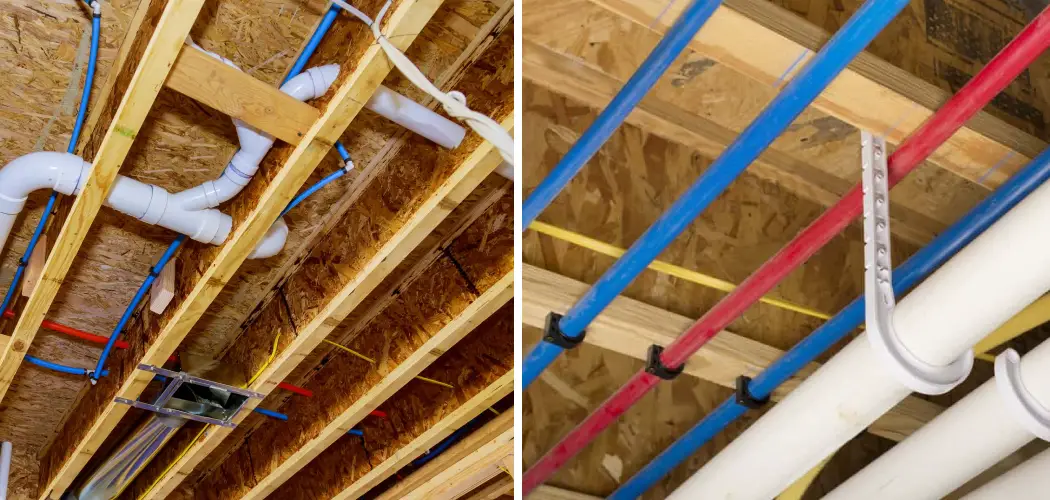Crawl spaces beneath homes are notorious for their vulnerability to extreme temperatures. During cold winter months, these subfloor areas can become a frigid haven, causing concern for homeowners with plumbing systems running through them. PEX (polyethylene cross-linked) pipes, a popular choice for plumbing installations, are flexible and durable, but they too, can succumb to freezing temperatures if not adequately protected.
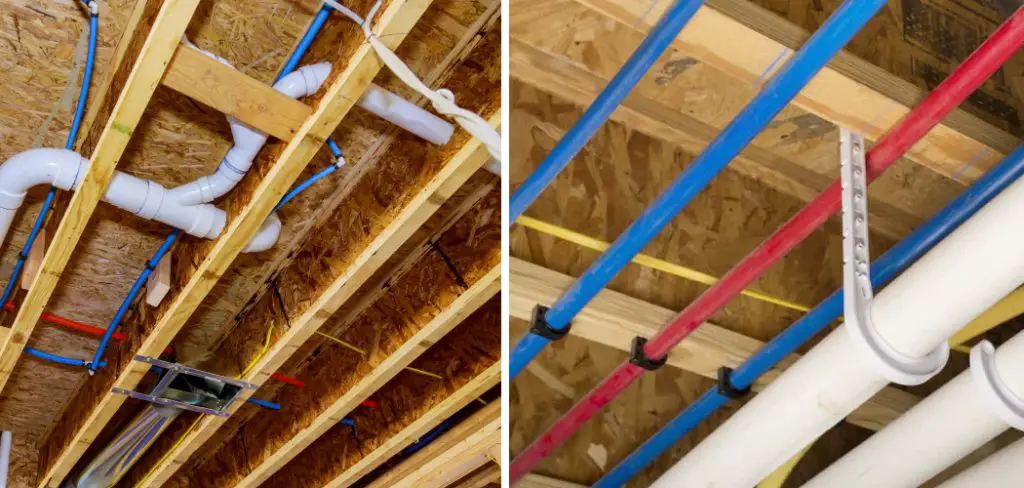
In this comprehensive guide, we’ll explore how to keep pex from freezing in crawl space. From insulation techniques to heat sources and monitoring systems, you’ll discover the means to prevent freezing and ensure a reliable water supply even in the harshest conditions. Protecting your PEX pipes in crawl spaces is not only a matter of convenience but also a smart investment in the longevity of your plumbing infrastructure.
Importance of Preventing PEX from Freezing in Crawl Spaces
When it comes to home maintenance, one of the last things homeowners want to deal with is frozen pipes. Not only is it inconvenient and uncomfortable to live without running water, but it can also lead to costly repairs. This is especially true for PEX pipes that are commonly used in crawl spaces.
PEX, or cross-linked polyethylene, is a popular choice among contractors due to its flexibility and durability. However, when exposed to freezing temperatures, PEX can become brittle and prone to cracking or bursting. This poses a serious risk for homes with crawl spaces as they tend to be poorly insulated and have little heat circulation.
Preventing PEX from freezing in crawl spaces should be a top priority for homeowners. Not only does it protect the structural integrity of the pipes, but it also ensures the constant flow of water for daily tasks such as cooking, cleaning, and bathing.
Potential Consequences of Frozen PEX in Crawl Spaces
Frozen PEX pipes in crawl spaces can result in several unwanted consequences, some of which may require costly repairs. These consequences include:
- Burst Pipes: When water freezes, it expands, which can cause PEX pipes to burst. This can result in significant damage to your plumbing system and property.
- Water Damage: Burst pipes from frozen PEX can lead to water damage in your home or building. This can be especially problematic if the crawl space is not easily accessible and the leak goes unnoticed for an extended period.
- Mold Growth: Moisture from a burst pipe can lead to mold growth, especially in dark and damp crawl spaces. Mold not only causes structural damage but also poses health risks for occupants.
- Increased Energy Bills: Frozen PEX pipes can cause a decrease in water pressure, which may result in higher energy bills as your plumbing system works harder to deliver water.
- Inconvenience: Dealing with frozen PEX pipes in your crawl space can be extremely inconvenient. It may disrupt your daily routines and require you to spend time and money on repairs.
10 Methods How to Keep PEX from Freezing in Crawl Space
1. Insulate the Crawl Space
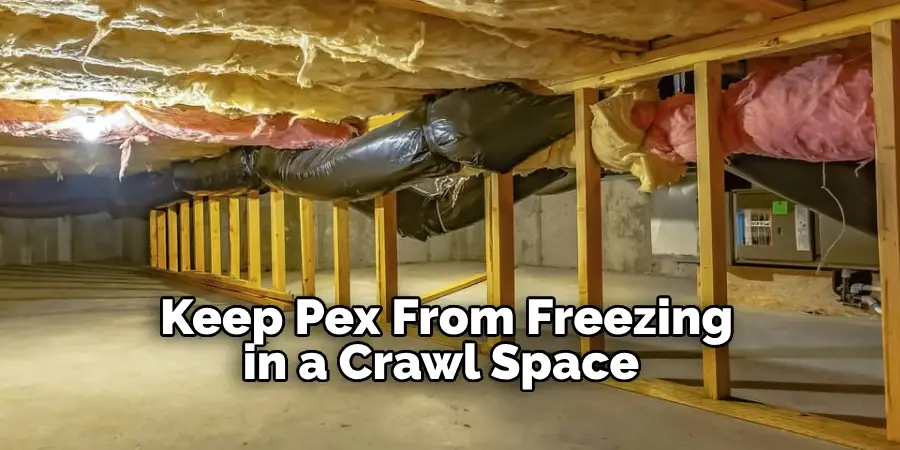
One of the most effective ways to keep PEX from freezing in a crawl space is to insulate it properly. The insulation should be installed on all walls and floors of the crawl space, as well as any pipes or ducts that are running through it.
This will help to keep the temperature inside the crawl space consistent and prevent any cold air from entering. Additionally, a vapor barrier should also be installed on the floor of the crawl space to prevent moisture buildup.
2. Install a Heating System
Installing a heating system in your crawl space can also help to keep your PEX from freezing. A small electric heater or furnace can be used to maintain a consistent temperature inside the crawl space, ensuring that your pipes remain above freezing temperatures at all times. It is important to ensure that any heating system you install is properly vented so that there is no risk of carbon monoxide poisoning.
3. Seal Any Gaps or Cracks
It is important to seal any gaps or cracks around windows, doors, and other openings in your home’s exterior in order to keep cold air out of your crawl space and protect your PEX from freezing temperatures. Using caulk or expanding foam around these openings can help to reduce energy costs and provide additional insulation for your home during colder months.
4. Install Pipe Insulation Sleeves
Pipe insulation sleeves are an easy way to help protect your PEX pipes from freezing temperatures in a crawl space. These sleeves are made from materials such as foam or fiberglass and fit snugly over the pipes, providing an additional layer of insulation that helps to keep them warm even when temperatures outside drop below freezing.
5. Use Heat Tape
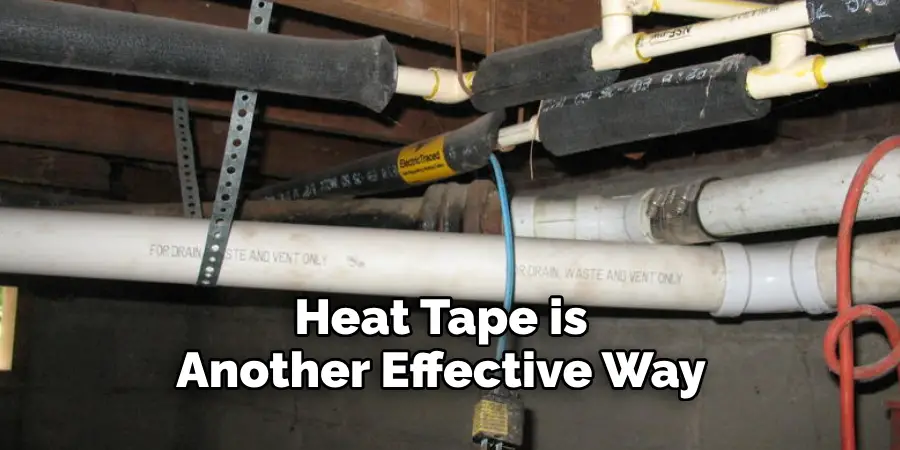
Heat tape is another effective way to keep PEX from freezing in a crawl space during colder months. Heat tape works by using electricity to generate heat, which is then transferred directly onto the pipe’s surface, keeping it warm enough so that it does not freeze over time. It is important to use UL-listed heat tape for safety reasons and make sure that it has been properly installed before turning it on for use each winter season.
6. Install Radiant Floor Heating
Radiant floor heating systems are an efficient way to provide warmth throughout a room without needing bulky radiators or vents to take up valuable floor space. They work by transferring heat directly into surfaces such as floors or ceilings.
Allowing them to stay comfortably warm even when outside temperatures drop below freezing point – perfect for keeping PEX pipes safe in a crawlspace! Installing radiant floor heating may require some professional assistance but can ultimately save you money on energy costs while keeping your pipes safe during colder months, too!
7. Improve Ventilation
Adequate ventilation within a crawlspace helps ensure that air circulates freely throughout this area and prevents cold spots where temperatures may drop too low for PEX piping safety – especially if you have an uninsulated floor!
To improve ventilation within this area, try installing vents along walls near ground level, which allow fresh air inside while pushing stale air out; this will both reduce humidity levels (which could lead towards frozen pipes) and increase airflow between different parts of the room too!
8. Utilize Solar Power

Solar power can also be used as an efficient way of providing warmth within a crawlspace – helping keep PEX piping safe during colder months, too! Solar panels absorb sunlight during daylight hours, which then gets converted into usable electricity; this energy can then be used either directly (through electrical appliances) or indirectly (through heated water tanks) depending on what type of setup you have installed within your home!
9. Invest in High Quality Materials
When selecting materials for installation within your home’s crawlspace, always make sure they are high-quality items that will stand up against harsher weather conditions – like those experienced during wintertime! For example, choose thicker wall insulation boards that won’t easily break down due to changes in temperature; likewise, opt for thicker pipe insulation sleeves rather than thinner ones, as these offer more protection against extreme weather conditions too!
10. Monitor Temperature Regularly
Finally, monitoring temperature regularly within your home’s crawlspace helps ensure any sudden drops don’t go unnoticed – allowing you time enough time to take action before any serious damage occurs!
Investing in thermometers specifically designed for measuring internal spaces like basements/crawlspaces makes this job much easier; simply place these around various points throughout this area (such as near windows/doors) and then check their readings daily/weekly depending on how often you’d like updates about current conditions inside here!
Things to Consider When Keeping PEX from Freezing in Crawl Space
After understanding the importance of keeping Pex pipes from freezing in crawl spaces, it is important to know how to prevent it. Here are some things to consider when trying to keep your Pex pipes from freezing.
Insulation
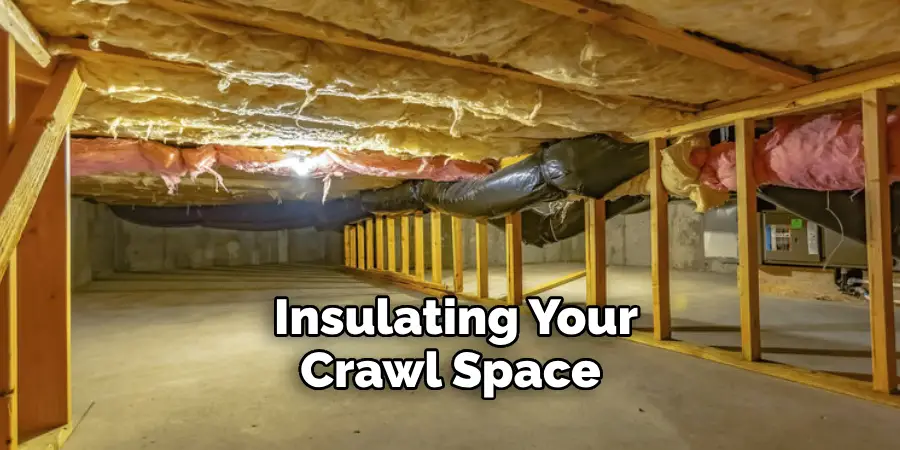
Insulating your crawl space can help maintain a warmer temperature inside, preventing the Pex pipes from freezing. The type of insulation required will depend on the climate and location of your home.
Heat Sources
Adding a heat source such as a small heater or heat tape can also be effective in preventing Pex pipes from freezing in crawl spaces. However, this option may not be suitable for all homes due to electrical limitations or safety concerns.
Pipe Placement
The placement of Pex pipes is crucial in preventing freezing. Pipes should be installed in interior walls or raised off the ground to avoid contact with cold surfaces.
Air Sealing
Sealing any gaps or cracks in the crawl space can also help maintain a warmer temperature and prevent cold air from entering, ultimately keeping Pex pipes from freezing.
Drip Faucets
In extreme cold temperatures, allowing a small amount of water to drip from faucets can help prevent freezing by keeping water flowing through the pipes.
Regular Maintenance
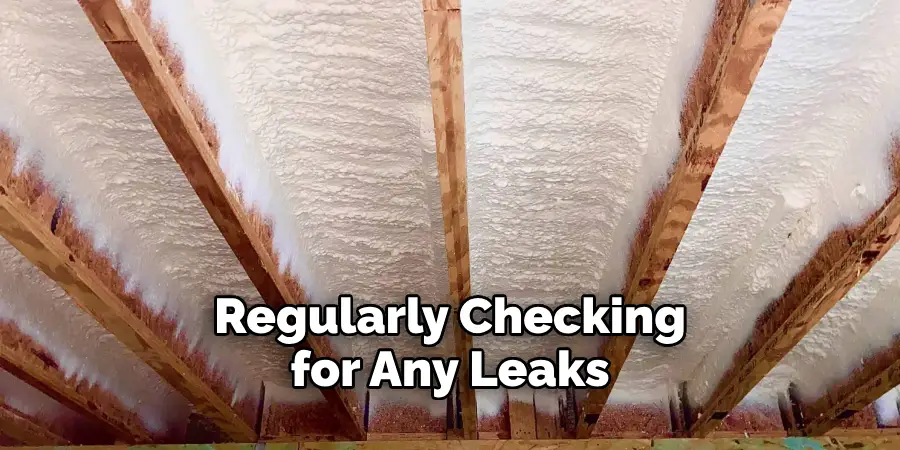
Regularly checking for any leaks, cracks, or damage to Pex pipes is important in preventing freezing. Any issues should be addressed immediately to avoid further damage.
Common Mistakes to Avoid When Keeping PEX from Freezing in Crawl Space
When it comes to keeping Pex pipes from freezing in crawl spaces, there are a few common mistakes that homeowners tend to make. By avoiding these mistakes, you can ensure that your Pex pipes stay protected and functional during the colder months.
One of the biggest mistakes is not properly insulating the crawl space. Without proper insulation, cold air can easily seep into the space and freeze your Pex pipes. Make sure to use insulation with a high R-value and cover any exposed pipes with foam sleeves or heat tape.
Another mistake is not sealing off any vents or openings in the crawl space. These openings allow cold air to enter and can also create drafts that may contribute to frozen pipes. Be sure to seal off any vents or openings with weather stripping, caulk, or foam insulation.
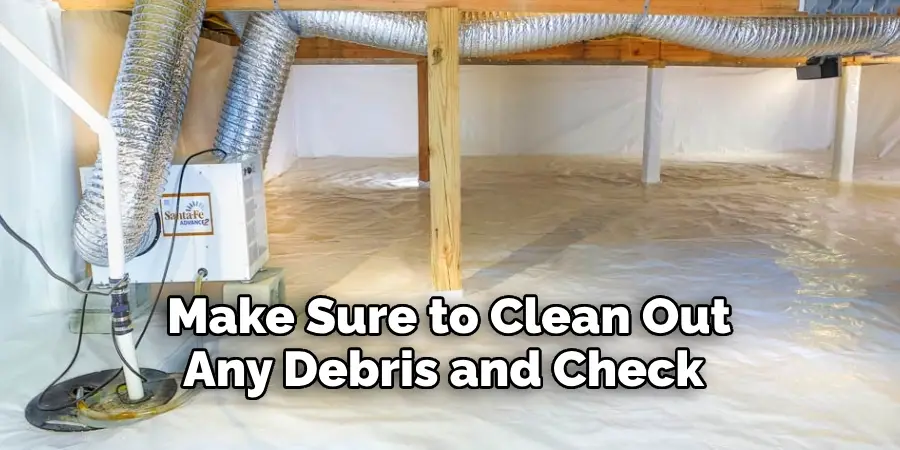
Not properly maintaining the crawl space can also lead to frozen Pex pipes. Make sure to clean out any debris and check for any leaks or plumbing issues regularly. Fixing these issues promptly can prevent them from becoming bigger problems that may cause your pipes to freeze.
Additionally, not keeping a consistent temperature in the crawl space can also be problematic. While you don’t need to heat the entire space, it’s important to maintain a temperature above freezing by using a thermostat-controlled space heater or installing a heat source specifically for the crawl space.
Lastly, neglecting proper drainage of water around the foundation of your home can contribute to frozen Pex pipes in your crawl space. Make sure to keep gutters and downspouts clean and free of debris, and ensure that the ground around your home slopes away from the foundation to prevent water from pooling near your pipes.
Conclusion
Taking preventative steps to ensure that your pipes don’t freeze in the crawl space can be a simple and cost-effective way to save you a lot of headaches in the future. Start by insulating the crawl space walls, increasing ventilation, and adding a dehumidifier if necessary. You should also wrap insulation around all exposed pipes and these measures will go a long way in keeping your pipes from freezing up, regardless of whatever seasonal change comes their way.
Having pex piping professionally installed and inspected regularly is also important for continued maintenance assurance. With these practical tips on how to keep pex from freezing in crawl space, you are now equipped with the knowledge to provide your home the protection it needs through all kinds of weather conditions.

